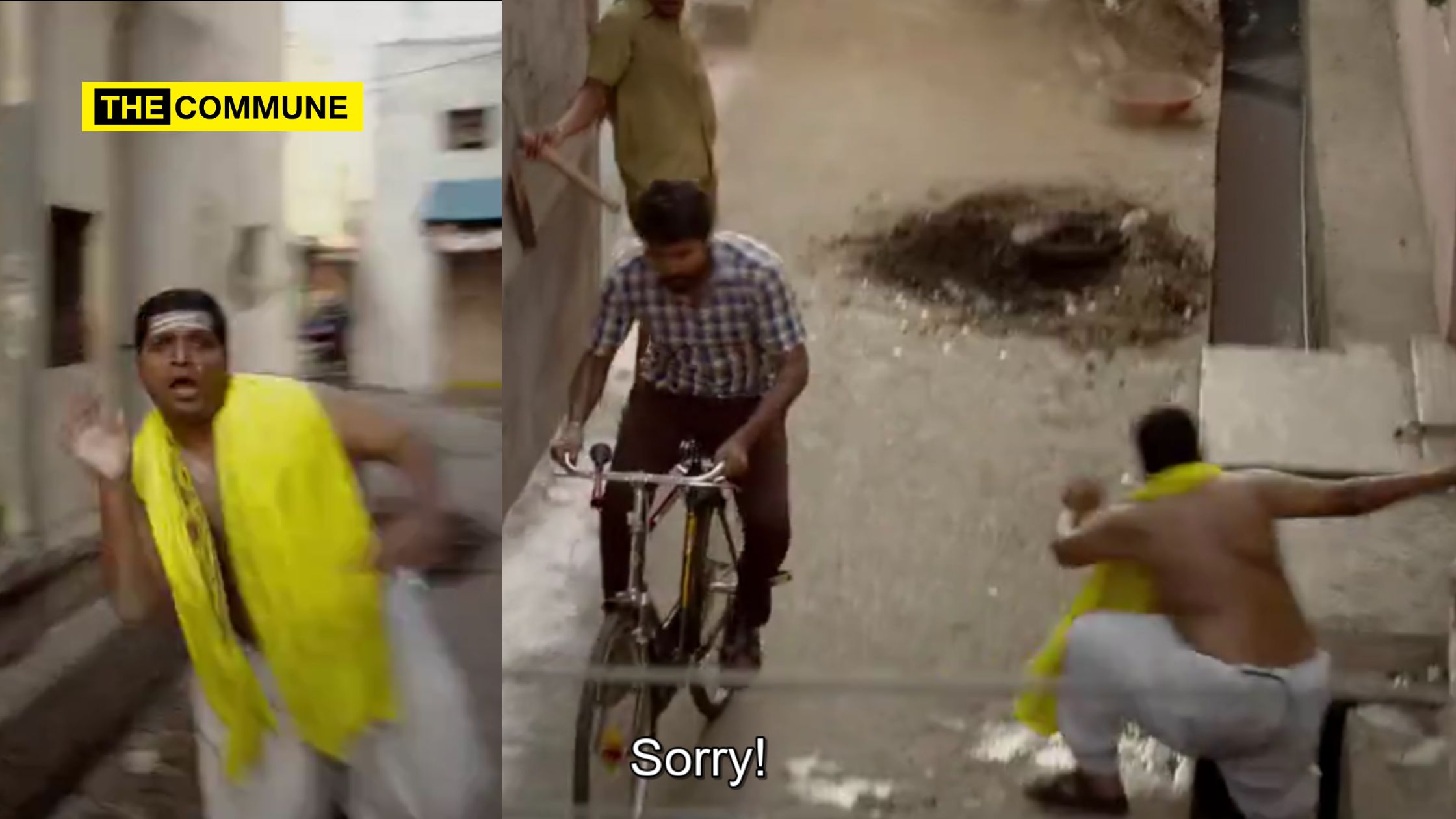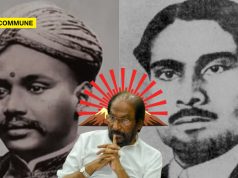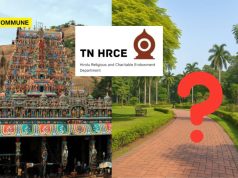
References to Brahmins can be found in the earliest Tamil literature, such as the praise for the sage Gautama in the Tamil work Silappatikaram, who served in the court of Senguttuvan’s predecessor. The Tolkappiyam, from an earlier era, speaks of the victorious Brahmin. Mulam Kilar of Avur, in a poem from Purananuru, lauds the learning and character of Brahmin Kauniyan Vinnam Thayan of Cholanadu, highlighting his efforts against the penetration of Buddhism in Tamil land and praising his faithful performance of sacrifices.
During the British Raj, anti-Brahmin sentiments were actively promoted by both British administrators and writers. Figures like J.H. Nelson portrayed non-Brahmins as superior, while Charles E. Gover’s “The Folk Tales of South India” contained anti-Brahmin rhetoric. Bishop Robert Caldwell, associated with the Dravidian Movement who seeded the thoughts of the narrative vehemently attacked Tamil Brahmins. The rise of EV Ramasamy (EVR) and the Justice Party from 1930 onwards intensified anti-Brahminism, with periodicals like Viduthalai and Justice launching scathing attacks on Brahmins. EVR’s works, along with CN Annadurai’s ‘Aryamayai,’ ridiculed Brahmin rituals and practices, accusing them of propagating casteism and superstitions. Although popular support for the anti-Brahmin tirade has waned over time, the Dravidar Kazhagam, founded by EVR, continues vehement anti-Brahmin rhetoric in its publications today.
When Annadurai left the Dravidar Kazhagam to form the Dravida Munnetra Kazhagam (DMK), they recognized mass media as a crucial tool to disseminate their ideology. This led to the production of films condemning what they perceived as Brahmin oppression and advocating social reform and atheism. The film “Parasakthi,” featuring a controversial scene of a temple priest attempting rape, marked the beginning of an era with more films supporting the Dravidian ideology. “Vedham Pudhidhu” by Bharathiraja portrayed a non-Brahmin boy learning music from a respected Brahmin and falling in love with the guru’s daughter.
The same continues today in films like “Annapoorani” with blatant propaganda is easily recognizable, but in “Ayalaan,” a more subtle and insidious approach is employed for comic relief. The scene featuring Siva Karthikeyan riding a brakeless cycle in a narrow street, causing someone to fall into a sewage drain, may last only 5 seconds, but it is a calculated effort. The choice to depict a specific character, dress them in a certain way, and undergo multiple retakes suggests a deliberate intent to generate laughter. If it were solely for humor, the character falling would have been portrayed as an “identity-less” individual. However, the clear intention is to derive cheap laughs from the audience, particularly targeting a certain demographic. The film’s portrayal of the villain and his corporation named “Aaryan Industries” adds another layer to the narrative, drawing parallels to the portrayal of Manu Builders in “Kaala.” This hint shows the director or production unit’s affiliation to Dravidian ideology to get some favors later.
On-the-face propaganda films like Annapoorani get noticed easily.
But in Ayalaan, a subtle, cheap trick is used for evoking laughter.
When SK rides a brakeless cycle in a small street, one !yer mama falls into the sewage drain.
This is a 5 second clip, but its not… pic.twitter.com/PcIoWEqmEq
— Tamil Labs 2.0 (@labstamil) February 10, 2024
Crafting such a scene requires a level of calculated malice, involving the meticulous storyboarding, casting, and execution to perpetuate a harmful stereotype. This deliberate portrayal of a Brahmin character falling into a ditch not only aims to entertain but is part of a larger narrative within the Dravidian project. The first facet of this project involves presenting Brahmin men as effeminate, cowardly figures, devoid of masculinity, surviving through scheming and betraying lower castes to the antagonist. These characters are deliberately made comical caricatures, reinforcing a narrative that justifies going after Brahmin women.
The second aspect focuses on depicting Brahmin women as objects of desire, discontent with their own community and yearning to be rescued from the supposed Brahminical oppression. This scene, lasting a mere five seconds, adds to a century-long pattern of portraying Tamil Brahmins as clowns, reinforcing the harmful perception that they are deserving of mockery. It is a continuation of the sustained assault on Tamil Brahmins through the medium of Dravidian art and cinema, leaving a lasting impact on the minds of millions of Tamil youth.
The title “Ayalaan,” meaning alien in Tamil, takes on a peculiar significance as it intertwines with an unexpected and seemingly unrelated subplot. In a striking example of calculated narrative manipulation, the film introduces the above random scene of a Brahmin falling into a ditch. This element appears to be a deliberate insertion, emphasizing the level of meticulous planning and execution involved. The scene doesn’t contribute to the main storyline but rather stands out as an anomalous addition, suggesting a certain criminal passion in the storytelling process.
The film’s connection to an alien subject becomes evident when an alien is depicted entering “Aaryan Industries,” adding an additional layer to the narrative. This seemingly random and disconnected insert reflects the lengths to which the filmmakers went to weave an unnecessary and derogatory portrayal of Brahmins into the fabric of the movie. It underscores a deliberate attempt to perpetuate harmful stereotypes and continues the century-long assault on Tamil Brahmins through the medium of cinema.
Subscribe to our channels on Telegram, WhatsApp, and Instagram and get the best stories of the day delivered to you personally.




